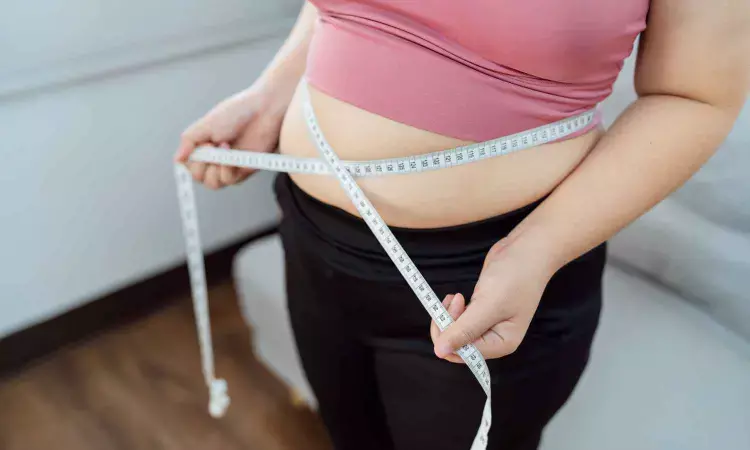- Home
- Medical news & Guidelines
- Anesthesiology
- Cardiology and CTVS
- Critical Care
- Dentistry
- Dermatology
- Diabetes and Endocrinology
- ENT
- Gastroenterology
- Medicine
- Nephrology
- Neurology
- Obstretics-Gynaecology
- Oncology
- Ophthalmology
- Orthopaedics
- Pediatrics-Neonatology
- Psychiatry
- Pulmonology
- Radiology
- Surgery
- Urology
- Laboratory Medicine
- Diet
- Nursing
- Paramedical
- Physiotherapy
- Health news
- Fact Check
- Bone Health Fact Check
- Brain Health Fact Check
- Cancer Related Fact Check
- Child Care Fact Check
- Dental and oral health fact check
- Diabetes and metabolic health fact check
- Diet and Nutrition Fact Check
- Eye and ENT Care Fact Check
- Fitness fact check
- Gut health fact check
- Heart health fact check
- Kidney health fact check
- Medical education fact check
- Men's health fact check
- Respiratory fact check
- Skin and hair care fact check
- Vaccine and Immunization fact check
- Women's health fact check
- AYUSH
- State News
- Andaman and Nicobar Islands
- Andhra Pradesh
- Arunachal Pradesh
- Assam
- Bihar
- Chandigarh
- Chattisgarh
- Dadra and Nagar Haveli
- Daman and Diu
- Delhi
- Goa
- Gujarat
- Haryana
- Himachal Pradesh
- Jammu & Kashmir
- Jharkhand
- Karnataka
- Kerala
- Ladakh
- Lakshadweep
- Madhya Pradesh
- Maharashtra
- Manipur
- Meghalaya
- Mizoram
- Nagaland
- Odisha
- Puducherry
- Punjab
- Rajasthan
- Sikkim
- Tamil Nadu
- Telangana
- Tripura
- Uttar Pradesh
- Uttrakhand
- West Bengal
- Medical Education
- Industry
Across all BMI categories, postmenopausal women with larger waist circumference at greater risk for death: Study

A prospective cohort study found that stratifying BMI categories by BMI-specific waist circumference thresholds modestly improved mortality risk stratification in postmenopausal women, with larger waist circumference predicting greater mortality in women across BMI groups.
The findings support recent International Atherosclerosis Society (IAS) and International Chair on Cardiometabolic Risk (ICCR) recommendations to include waist circumference measurement with BMI in patient screenings to identify high-risk obesity phenotypes. The study is published in Annals of Internal Medicine.
Researchers from the Fred Hutchinson Cancer Center and colleagues analyzed data for 139,213 postmenopausal women aged 50 to 79 years from the Women’s Health Initiative, a multicenter, population-based study with enrollment from 1993-1998 and follow up through 2021.
The participants were divided into three cohorts: development cohort (67,774 participants), Validation Cohort 1 (48,335 participants with a high prevalence of overweight or obesity), and Validation Cohort 2 (23,104 participants from diverse, geographically separate centers). Researchers developed three models to predict mortality risk: a mortality model; the mortality model plus BMI (BMI model); and the mortality model plus BMI plus BMI-specific waist circumference thresholds (BMI-WC model). BMI categories included normal weight, overweight, and obesity classes 1 to 3, and were stratified by prespecified waist circumference thresholds of ≥80, ≥90, ≥105, ≥115, and ≥115 cm, respectively. Validation Cohort 1 had a higher prevalence of large waist circumference (21.9%), according to BMI-specific waist thresholds, than Validation Cohort 2 (18.2%). Nearly all women with obesity-2 or obesity-3 had waist circumference of 88 cm or larger - the current guideline for women and independent of BMI.
After stratification, the researchers found that mortality risk was greater for BMI categories with larger waist circumference than their counterparts with normal waist circumference. Additionally, mortality risk was similar for women with normal weight or overweight and large waist circumference and women with obesity-1 and normal waist circumference. Overall, stratifying BMI categories by waist circumference thresholds modestly improves risk stratification for all-cause mortality in healthy postmenopausal women with a high prevalence of overweight or obesity. These results suggest that clinical guidelines for assessing adiposity would benefit from the incorporation of waist circumference with BMI measures.
Reference:
Aaron K. Aragaki, JoAnn E. Manson, Development and Validation of Body Mass Index–Specific Waist Circumference Thresholds in Postmenopausal Women: A Prospective Cohort Study, Annals of Internal Medicine, https://doi.org/10.7326/ANNALS-24-00713.
Dr Kamal Kant Kohli-MBBS, DTCD- a chest specialist with more than 30 years of practice and a flair for writing clinical articles, Dr Kamal Kant Kohli joined Medical Dialogues as a Chief Editor of Medical News. Besides writing articles, as an editor, he proofreads and verifies all the medical content published on Medical Dialogues including those coming from journals, studies,medical conferences,guidelines etc. Email: drkohli@medicaldialogues.in. Contact no. 011-43720751


